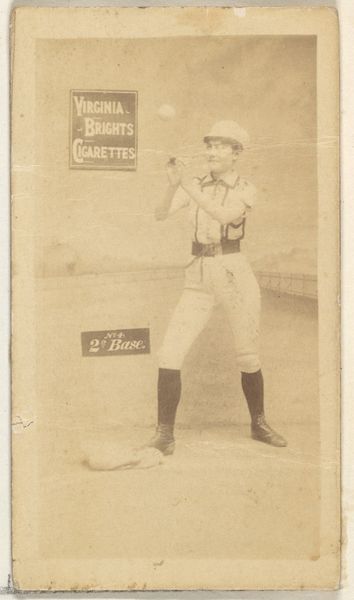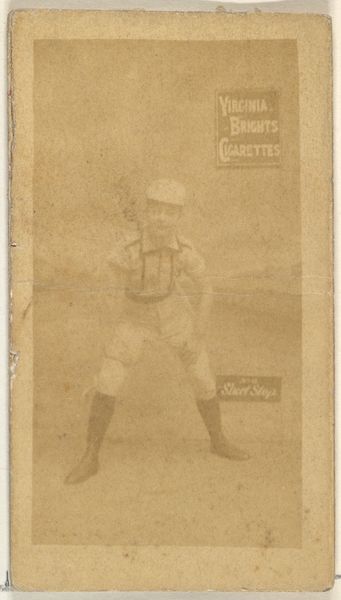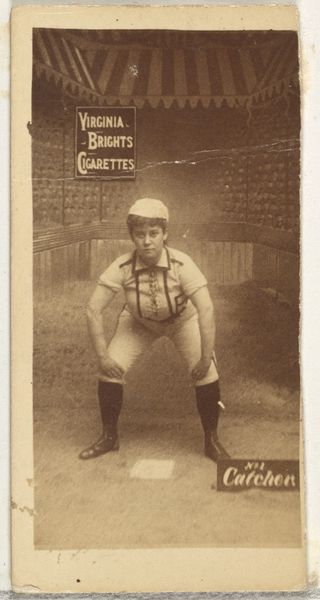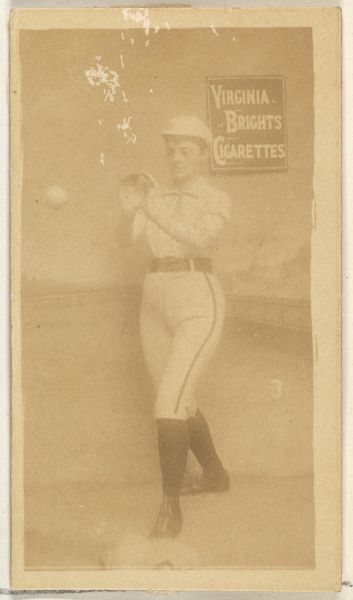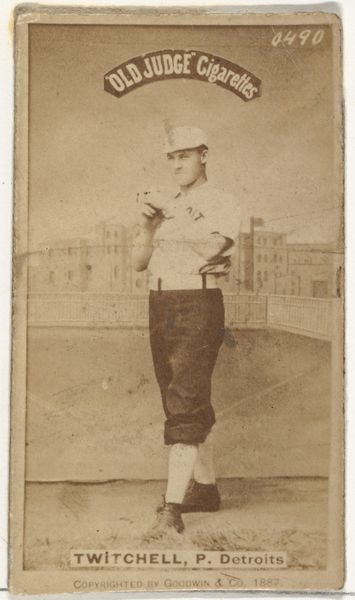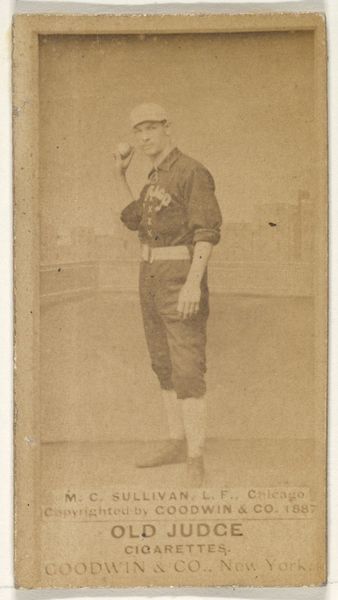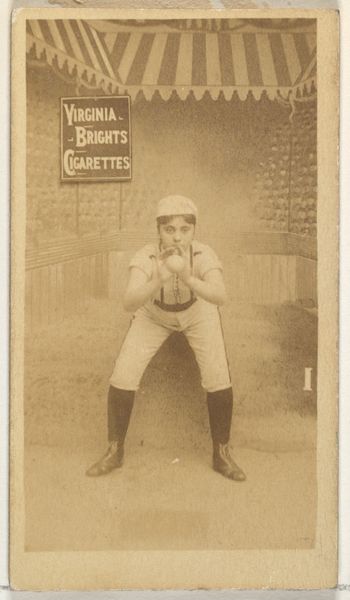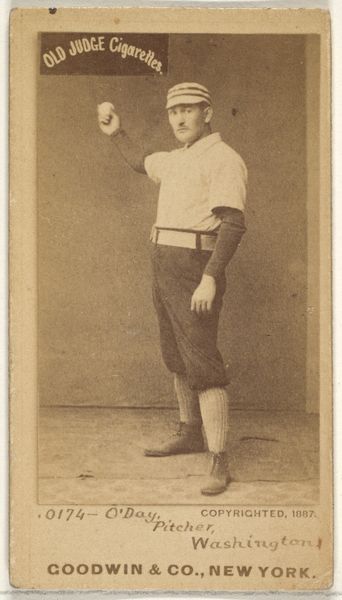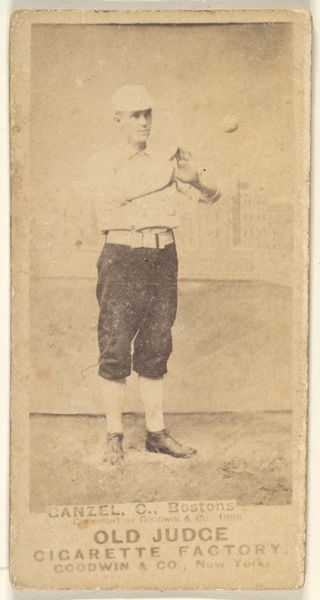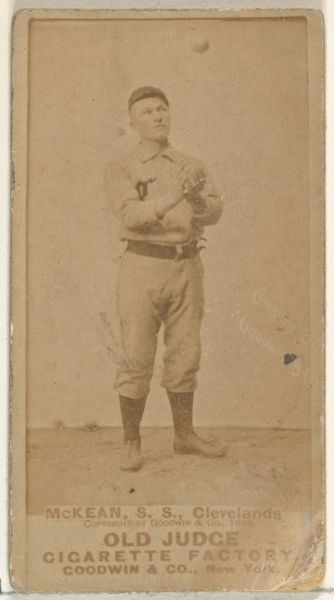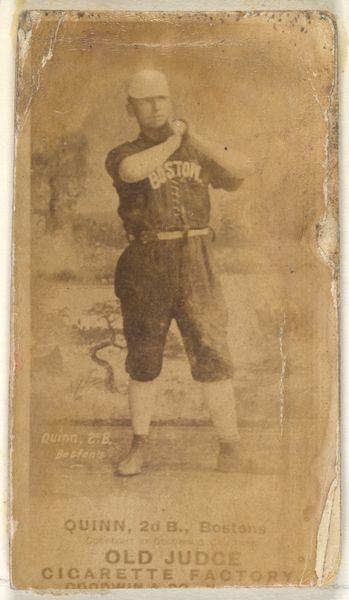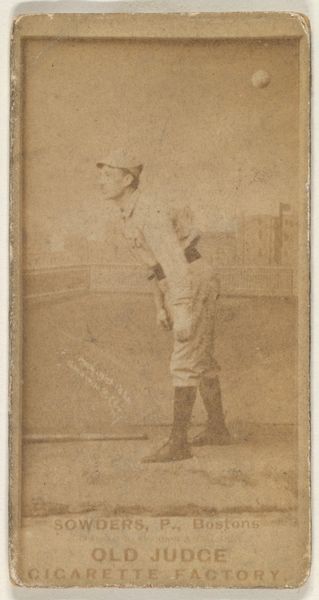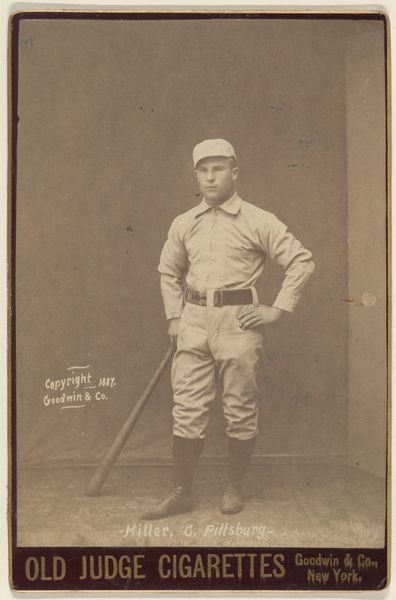
Card 4, from the Girl Baseball Players series (N48, Type 2) for Virginia Brights Cigarettes 1886 - 1888
0:00
0:00
drawing, print
#
portrait
#
photo of handprinted image
#
drawing
#
aged paper
#
toned paper
#
light pencil work
#
yellowing background
#
photo restoration
# print
#
colourisation
#
baseball
#
personal sketchbook
#
men
#
watercolour illustration
#
athlete
#
watercolor
Dimensions: Sheet: 2 3/4 x 1 3/8 in. (7 x 3.5 cm)
Copyright: Public Domain
Editor: Here we have "Card 4, from the Girl Baseball Players series" by Allen & Ginter, dating back to 1886-1888. It seems to be a drawing that has aged considerably. I’m intrigued by its connection to Virginia Brights Cigarettes – how does that influence our understanding of the piece? Curator: That's a fantastic starting point. The crucial aspect here is understanding this as a *manufactured object* – a print produced as a promotional item for cigarettes. How does that change our perception of the image, particularly the idealized representation of a woman baseball player? We have to consider the means of production, the labor involved in creating these cards, and their function within a system of mass consumption. Editor: So, it's less about celebrating female athletes and more about… selling cigarettes? Curator: Precisely! Consider the materials – cheap paper, mass-produced printing techniques. This isn't high art; it’s ephemera. Its value comes from its connection to this system. The image itself, seemingly progressive in depicting a female athlete, ultimately serves to normalize the consumption of tobacco. We should consider also the broader context. What opportunities existed for working women in that era and what would they think of these baseball cards and what would a collector make of them then and what does one make of them today? Editor: I see. So by examining the materials and its original function as an advertising tool, we get a richer, perhaps more cynical understanding. Curator: Exactly. We move beyond just admiring the image to interrogating the socio-economic forces that brought it into existence. That tension, between a potentially empowering image and its role in promoting a harmful product, is where the interest lies. What I take away from it is an understanding of both marketing ploys in the early development of sports marketing and a hint as to gender stereotypes in America at that time. Editor: It's fascinating to think about how such a small, seemingly simple object can reveal so much about production, labor, and cultural values. Thank you!
Comments
No comments
Be the first to comment and join the conversation on the ultimate creative platform.
